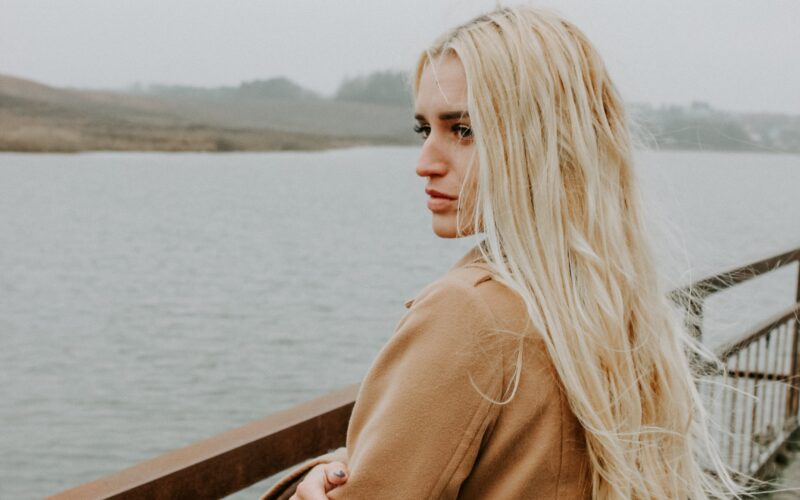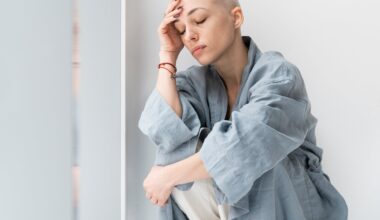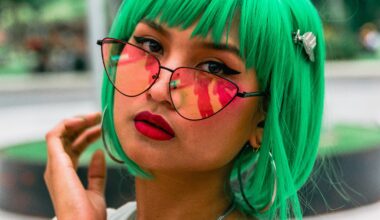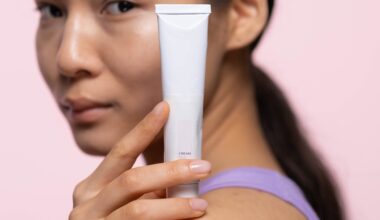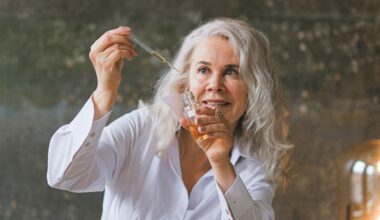Introduction
Hair, an iconic facet of our appearance, is more than just strands that frame our face; it’s a canvas for self-expression, a statement of identity, and a testament to the beauty of individuality. In the world of beauty and style, few aspects are as fascinating and versatile as hair colors. They allow us to redefine ourselves, explore new personas, and embrace our uniqueness with every shade we choose.
In this captivating journey, we delve into the realm of hair colors, unraveling the significance they hold in defining personal style. We’ll explore the most common hair colors, dissect societal perceptions of attractiveness linked to different hues, and uncover the hottest trends of the moment. As we travel deeper into this colorful world, we’ll also unveil the secrets behind the greying of hair and the allure of white locks. From the organic hair color movement to expert insights from professional hair colorists and geneticists, our exploration promises to be both enlightening and inspiring.
Join us on this vibrant odyssey through the world of hair colors as we celebrate the beauty of diversity, self-expression, and the myriad shades that make each of us unique. It’s a journey that celebrates you.
The Common Thread: The Most Prevalent Hair Colors
Which Hair Color Is Most Common? What Hair Color Is the Most Common?
Our exploration begins with an appreciation of the most prevalent and naturally occurring hair colors found worldwide. From rich browns to luscious blacks, fiery reds to golden blondes, we’ll discover the beauty in the shades that grace the heads of millions.
The Spectrum of Common Hair Colors:
- Black: Black hair is one of the most common hair colors globally, with a prevalence in regions such as Asia and Africa. Its deep, lustrous hue is often associated with sophistication and timelessness.
- Brown: Shades of brown, ranging from light to dark, are widespread in many parts of the world. Brown hair often conveys warmth, approachability, and versatility.
- Blonde: Blonde hair, with its sun-kissed allure, is common in regions like Northern Europe. It embodies youthfulness, vibrancy, and a carefree spirit.
- Red: Fiery red hair is relatively rare, accounting for only a small percentage of the population. It stands out as a symbol of boldness, passion, and individuality.
Why Certain Hair Colors Are More Prevalent:
The prevalence of specific hair colors is influenced by genetics and geographic factors. Certain shades are more common in populations due to ancestral heritage and adaptations to different climates. Understanding why certain hair colors are more widespread than others adds depth to our appreciation of human diversity.
In the next section, we’ll explore the intriguing question of whether there is an ideal hair color linked to attractiveness and delve into societal influences and preferences regarding hair hues. It’s a journey into the world of perceptions and preferences that shape our choices
Attraction and Perception: Is There an Ideal Hair Color?
Is Hair Color Most Attractive? What Hair Color Is the Most Common?
The allure of hair colors extends beyond aesthetics; it intersects with our perceptions of beauty and attractiveness. We often find ourselves pondering whether there’s an ideal hair color that universally captivates hearts and minds. Let’s delve into the intriguing world of attraction and the role hair color plays in shaping our perceptions.
The Perception of Attractiveness:
Perceptions of attractiveness are complex and influenced by various factors, including culture, personal experiences, and societal standards. When it comes to hair color, different shades can evoke distinct impressions:
- Brunettes: Brown hair is often associated with reliability, approachability, and stability. It’s seen as a versatile and classic choice that appeals to a wide audience.
- Blondes: Blonde hair, with its sunny and youthful appearance, is often perceived as alluring and playful. It can convey a sense of lightness and positivity.
- Redheads: Fiery red hair is often linked to uniqueness and individuality. It can exude confidence, passion, and a sense of adventure.
- Black: Black hair is often associated with mystery, elegance, and sophistication. It can create an aura of enigma and allure.
Societal Influences and Preferences
Societal influences, such as media representation and cultural norms, play a significant role in shaping our perceptions of beauty. Hollywood, fashion, and advertising often emphasize certain beauty standards, contributing to the idea that specific hair colors are more desirable than others. However, these standards are evolving, and diversity is increasingly celebrated.
Preferences for hair color can also vary widely among individuals. What one person finds attractive, another may not. Ultimately, attractiveness is a highly subjective concept, influenced by personal tastes and values.
In the next section, we’ll keep our fingers on the pulse of current trends as we explore the hottest hair colors making waves in the world of style. We’ll provide examples and inspirations for those looking to embrace the latest in hair color trends. It’s a journey into the dynamic and ever-evolving world of hair fashion.
Keeping Up with Trends: The Hottest Hair Colors Right Now
Which Hair Color Is Trending?
In the realm of fashion and style, trends are ever-evolving, and this holds true for hair colors as well. If you’re curious about the hues that are making waves and capturing imaginations right now, you’re in for a treat. Let’s explore the hottest hair colors of the moment, offering inspiration for those looking to embark on a transformative journey.
Trending Hair Colors:
- Pastel Paradise: Pastel hair colors have surged in popularity, offering a whimsical and dreamy look. Shades like lavender, baby blue, and soft pink allow individuals to express their creativity and embrace a sense of playfulness.
- Balayage Bliss: Balayage, a technique that blends natural tones seamlessly, continues to be a favored choice. It provides a sun-kissed effect, enhancing depth and dimension.
- Rich Copper: Copper tones, ranging from fiery red-orange to deep auburn, are captivating hearts. They add warmth and vibrancy to the hair, exuding confidence and boldness.
- Muted Earth Tones: Subdued earthy colors, such as mushroom brown and dusty rose, offer a subtle yet sophisticated appearance. They are versatile and complement various skin tones.
- Neon Fantasies: For those seeking bold and adventurous looks, neon hair colors like electric blue, fluorescent green, and vibrant orange make a statement that’s impossible to ignore.
Inspiration for Trendy Looks:
– Mermaid Ombre: Combine oceanic shades like turquoise and seafoam green for a mesmerizing mermaid-inspired ombre effect.
– Sunset Glow: Embrace the warm hues of a sunset with a gradient that transitions from deep orange to soft pink.
– Silver Streaks: Silver and gray shades continue to enchant, offering an elegant and ageless appeal.
– Velvet Rose: Achieve a velvety, romantic look with shades of dusty rose and mauve.
As trends continue to evolve, the possibilities for hair color experimentation are limitless. Whether you’re drawn to pastels, earthy tones, or neon adventures, there’s a trend to match your personality and style.
In our next section, we’ll shift our focus to the intriguing phenomenon of hair turning gray. We’ll explore the science behind it, the role of melanin, and the factors that contribute to the greying of hair. It’s a journey into the mysteries of aging locks.
The Age-Old Question: Why Does Hair Turn Grey?
Why Does Hair Color Grey?
The transformation of hair from its vibrant natural hue to shades of gray is a natural part of the aging process. It’s a phenomenon that has fascinated scientists and intrigued generations. In this section, we’ll delve into the science behind the greying of hair, the role of melanin, and the factors that contribute to this intriguing transformation.
The Role of Melanin:
Hair color is primarily determined by melanin, the pigment responsible for the color of our skin, eyes, and hair. There are two types of melanin that influence hair color:
- Eumelanin: This pigment is responsible for black and brown hair colors. It imparts dark hues and provides protection against UV radiation.
- Pheomelanin: Pheomelanin is responsible for red and blonde hair colors. It contributes lighter tones and is less effective at UV protection.
The Science Behind Greying:
As we age, our bodies undergo various changes, including a gradual reduction in melanin production. The decline in melanin production results in the loss of pigment, leading to the appearance of gray hair.
Several factors contribute to the greying of hair:
- Genetics: Genetics play a significant role in determining when and how quickly an individual’s hair will turn gray. If your parents experienced premature greying, you may be more likely to do so as well.
- Age: Aging is the primary factor in greying hair. Most people start to notice gray strands in their 30s, with the process accelerating as they get older.
- Stress: While not a direct cause, chronic stress may accelerate the greying process. Stress can lead to hormonal changes that affect melanin production.
- Nutrition: A balanced diet rich in essential nutrients, such as vitamins B12 and D, may help maintain healthy hair and delay the onset of greying.
- Medical Conditions: Certain medical conditions and treatments, such as thyroid disorders and chemotherapy, can lead to premature greying.
Embracing the Transition:
The greying of hair is a natural and inevitable process. Some individuals choose to embrace their gray hair as a symbol of wisdom and experience. Others may opt for hair dyes to maintain their desired color.
In the next section, we’ll explore the allure of white hair and its significance in different cultures. We’ll also discuss the factors that lead to the whitening of hair and the impact of stress on this intriguing transformation. It’s a journey into the world of silver locks and timeless elegance.
The Allure of White Hair: A Closer Look
Why Does Hair Color Turn White?
White hair, often associated with wisdom and timeless elegance, is a captivating phenomenon that occurs as hair ages. In this section, we’ll delve deeper into the allure of white hair, its significance in different cultures, the factors that contribute to its transformation, and the intriguing impact of stress.
The Symbolism of White Hair:
White hair has been revered in various cultures as a symbol of wisdom, experience, and maturity. It’s often associated with elders who possess a wealth of knowledge and life’s lessons. In some societies, white hair is viewed as a mark of respect and authority.
Factors Leading to Whitening:
The transformation of hair color from its natural shade to white is primarily influenced by the same factors that lead to gray hair, with some distinctions:
- Aging: Aging remains the primary factor contributing to white hair. As melanin production declines over time, hair gradually loses its color and turns white.
- Genetics: Genetic factors play a significant role in determining when an individual’s hair will turn white. Some individuals may experience this transformation earlier than others due to their genetic makeup.
The Impact of Stress:
While stress is not a direct cause of hair turning white, it has been linked to the phenomenon of “sudden whitening” or “overnight graying.” Stress can lead to hormonal imbalances that affect melanin production, potentially causing hair to lose its color more rapidly.
Cultural Significance:
In different cultures, white hair holds various meanings:
– In many Asian cultures, white hair is associated with wisdom, and elders with white hair are respected for their knowledge.
– In some African cultures, white hair is seen as a symbol of aging gracefully and is embraced with pride.
– In Western cultures, white hair is often associated with sophistication and elegance, making it a popular choice for those seeking a timeless look.
Whether embraced as a symbol of wisdom or a statement of personal style, white hair carries a unique allure that continues to captivate hearts and minds.
In the next section, we’ll shift our focus to the organic hair color movement, exploring the rising interest in natural hair color products and the benefits of choosing organic options. It’s a journey into healthier alternatives for those who seek to enhance or change their hair color.
Going Au Naturel: The Organic Hair Color Movement
Is Hair Color Organic?
In an era where health-conscious choices extend to all aspects of life, the beauty industry has witnessed a surge in interest in organic and natural products, including hair color. In this section, we’ll explore the growing fascination with the organic hair color movement, the benefits of choosing organic options, and how it aligns with the desire for a more sustainable and health-conscious approach to beauty.
The Rise of Organic Hair Color:
Organic hair color products are gaining popularity among individuals seeking a safer and more eco-friendly alternative to traditional hair dyes. These products are formulated with natural ingredients that reduce exposure to potentially harmful chemicals.
Benefits of Organic Hair Color:
- Fewer Chemicals: Organic hair colors products typically contain fewer synthetic chemicals, reducing the risk of skin irritation and allergic reactions.
- Healthier Hair: Natural ingredients in organic products are gentler on the hair, helping maintain its health and shine.
- Sustainability: Many organic brands prioritize sustainability and ethical practices, from ingredient sourcing to packaging.
- Reduced Environmental Impact: Organic hair color products often have a lower environmental footprint, as they avoid harsh chemicals and promote eco-friendly manufacturing processes.
Choosing the Right Shade Organically:
Organic hair color options include henna, herbal dyes, and plant-based formulations. When selecting an organic shade, consider factors like your natural hair color, the desired outcome, and any allergies or sensitivities you may have.
As we navigate the world of organic hair color, it’s essential to weigh the benefits of natural options against your personal preferences and desired results.
In our next section, we’ll seek expert insights on choosing the right hair color shade. We’ll feature interviews with professional hair colorists who provide guidance on selecting the perfect hue. Additionally, geneticists will offer scientific perspectives on hair color genetics, shedding light on the factors that determine our natural hair color. It’s a journey into both the art and science of hair color selection.
Expert Insights: Interviews with Hair Colorists and Geneticists
Hair color selection is a blend of personal preference, style, and science. In this section, we turn to the experts to glean insights into choosing the right hair color shade and explore the genetic factors that underlie our natural hair colors. Through interviews with professional hair colorists and geneticists, we aim to provide readers with a comprehensive understanding of the art and science behind hair color.
Interview with Professional Hair Colorist, Sarah Michaels:
Q: What advice would you give to someone looking to change their hair color?*
Sarah Michaels: “When choosing a new hair color, it’s essential to consider factors like your skin tone, eye color, and personal style. A skilled colorist can help you find a shade that complements your features and enhances your overall look. Additionally, consider your maintenance preferences, as some colors require more upkeep than others.”
Interview with Geneticist Dr. Laura Johnson:
Q: How does genetics influence our natural hair color?*
Dr. Laura Johnson: “Genetics plays a significant role in determining our natural hair color. Specific genes, such as MC1R and ASIP, regulate the production of melanin, the pigment responsible for hair color. Variations in these genes can result in different hair colors, from black and brown to red and blonde. It’s a fascinating area of study that sheds light on the complexity of human genetics.”
Conclusion
Our exploration of the captivating world of hair colors has taken us on a journey through common tones, trendy hues, and the mysteries of grey and white hair. From the allure of pastel paradise to the wisdom embodied by white locks, hair colors reflect our unique identities and personal expressions.
As we conclude this colorful odyssey, we encourage readers to embrace their natural hair color or explore new hues based on personal preferences. Whether you’re drawn to the latest trends, organic options, or the elegance of aging gracefully, your hair color is a canvas for self-expression and a celebration of your individuality.
